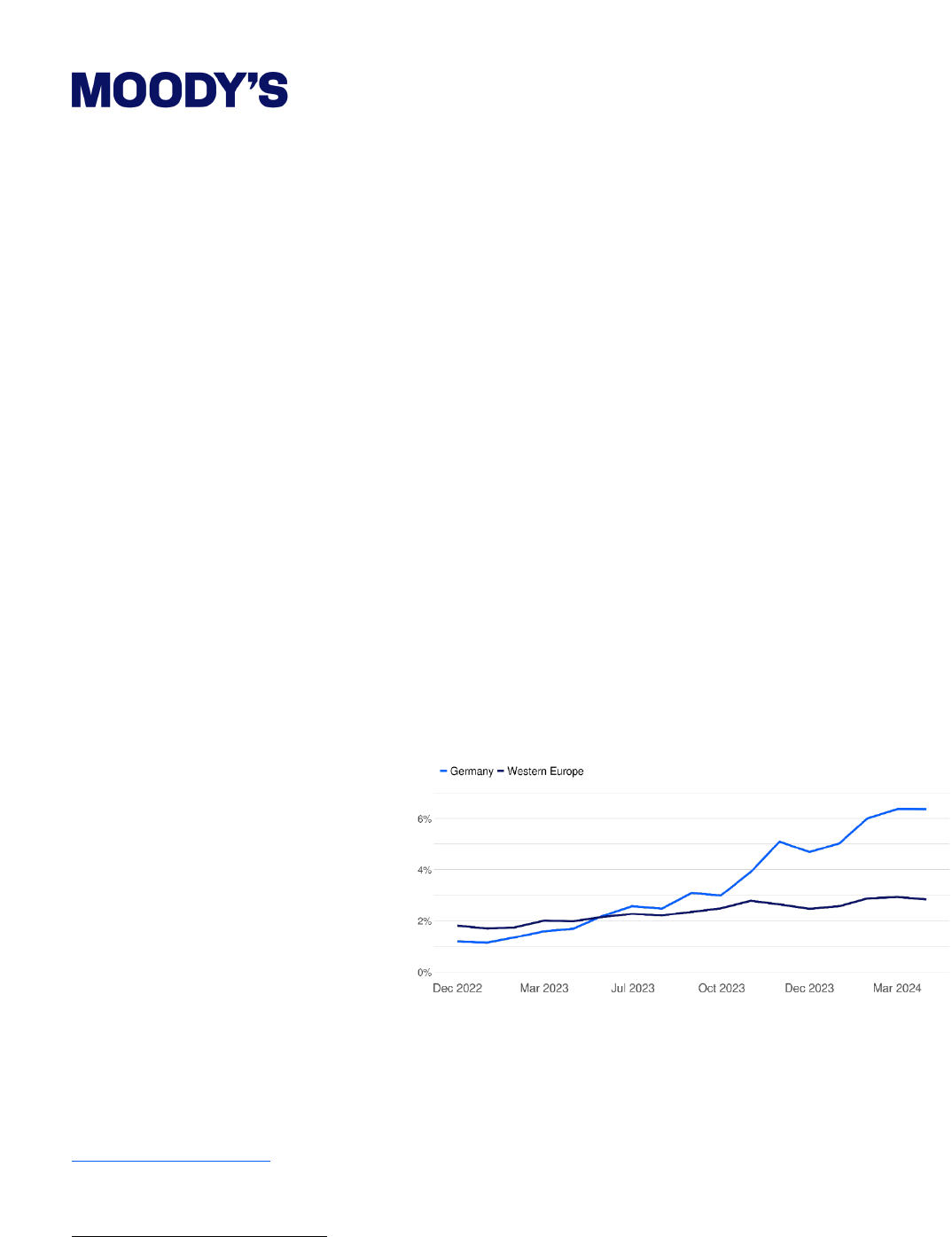
Credit Strategy
Froom Boom to Gloom: Navigating the Impending Downturn in the German Construction and Real Estate Sector
1
From Boom to Gloom: Navigating the
Impending Downturn in the German
Construction and Real Estate Sector
A decrease in demand for new buildings is threatening the
performance of the Construction and Real Estate (CRE) sector in
several European countries. Germany, one of the largest and robust
economies in the EU with an active property market, is currently
experiencing a downturn in its real estate sector.
Credit risk has jumped sharply in the past twelve months. Figure 1
shows the average one-year probability of default (PD) for public
companies in the CRE sector in Germany and Western Europe.
1
For
German CRE companies, the average PD jumped from 1.7% in April
2023 to 6.37% in April 2024. This contrasts sharply with the increase
observed for CRE companies in Western Europe with the average PD
rising from 1.99% to 2.84% over the same period.
FIGURE 1 Average one-year PD for public companies in the CRE
sector, Germany and Western Europe
Data source: Moody’s EDF-X platform.
1
Western Europe includes Åland Islands, Andorra, Austria, Belgium Switzerland, Cyprus, Germany, Denmark, Spain,
Finland, Falkland Islands, France, Faroe Islands, United Kingdom, Guernsey, Gibraltar, Greece, Greenland, Isle of Man,
Ireland, Iceland, Italy, Jersey, Liechtenstein, Luxembourg, Monaco, Malta, Norfolk Island, Netherlands, Norway, Portugal,
Svalbard and Jan Mayen, San Marino, Sweden, and Holy See.
EUROPE CREDIT STRATEGY
JUNE 2024
CONTACTS
Cecilia Bocchio
Head of Regional Growth for Europe and
Africa
Predictive Analytics
+44 (207) 772-5666
Cecilia.Bocchio@moodys.com
Marco Del Treppo
Associate Analytics & Model Analyst
Predictive Analytics
+420 (234) 747-561
Marco.DelTreppo@moodys.com
Santiago Otero
Research Associate
Predictive Analytics
+420 (234) 747-537
Santiago.[email protected]
Jose Luis Luna-Alpizar
Associate Director
Predictive Analytics
+420 (224) 222-929
JoseLuis.LunaAlpizar@moodys.com
ABOUT
EDF-X, Moody’s flagship solution for
accelerated financial risk insights and
early warning signals, pre-calculates
credit measures for 450+ million
companies globally – public and
private, rated and unrated – using the
best data available and provides
customized views for a range of
business and credit decisions.
Learn more about EDF-x

Credit Strategy
Froom Boom to Gloom: Navigating the Impending Downturn in the German Construction and Real Estate Sector
2
The deterioration in credit quality for German construction reflects a worsening in economic fundamentals in
the sector. In August 2023, the number of new building permits granted reached a ten-year low. This downturn
can be attributed to declining residential property prices and stagnant growth in construction employment.
Residential construction project cancellations in Germany rose to 22.2% in October, and new building permits
saw a decrease of 9.4% in November compared to the previous month. The ongoing deterioration in the sector
can largely be traced back to escalating project failure rates, driven by a surge in interest rates (with the
European Central Bank's interest rate peaking at 4.5% in September 2023) and soaring construction costs due
to geopolitical and supply chain challenges. In May 2024, construction workers went on a nationwide strike, the
first one in 22 years.
GERMAN CONSTRUCTION SECTOR SHOWS HIGH CONCENTRATION OF RISKY
COMPANIES
The increase in the average probability of default for German CRE companies belies the potential credit risk of
the sector. When industries experience sector-wide stress, it becomes more difficult, but even more essential,
to be able to differentiate the companies in the sector that are most at risk. Moody’s EDF-X Early Warning
System (EWS) was designed to do just that. The EWS currently shows that the German construction sector
shows a high concentration of exceptionally risk firms.
Moody’s EDF-X EWS uses two key measures to identify companies as low, medium, high, or severe risk over the
next 12 months. The two measures are (1) whether a company’s forward-looking PD measure is above an
appropriate sector early warning trier level; and (2) the change in the PD-implied rating. Moody’s research has
shown that public companies with high early warning signals are 25 times more likely to default over the next
year than firms with low early warning signals.
The EWS signals show that 36% of publicly traded German companies were classified as severe risk in April
2024 compared to its peers, vs. 18% in the previous year. Figure 2 presents the April 2024 snapshot of Moody’s
EWS, with each circle representing a company and their relative size (measured by asset value). The largest
firms have been relatively more resilient to the increase in credit risk, as indicated by their placement in the
bottom left quadrant (Low Risk EWS category). This adverse situation might impact an already highly exposed
banking system. Not only do German banks hold the largest exposure to commercial and real estate loans in the
European Union, they are also witnessing a rise in non-performing loans.
2
The planned government measures
will alleviate the sector contraction, but they are not expected to avoid the decline already anticipated for 2024.
3
2
Sidders, J., Confort, N. and Callanan, N. (2024, February 27). Germany’s Slow-Motion Property Crash Is a Looming Risk
for Banks, Bloomberg.
3
https://www.moodys.com/research/Construction-Germany-Construction-downturn-will-hurt-materials-producers-but-
help-Sector-In-Depth--PBC_1389566#Summary
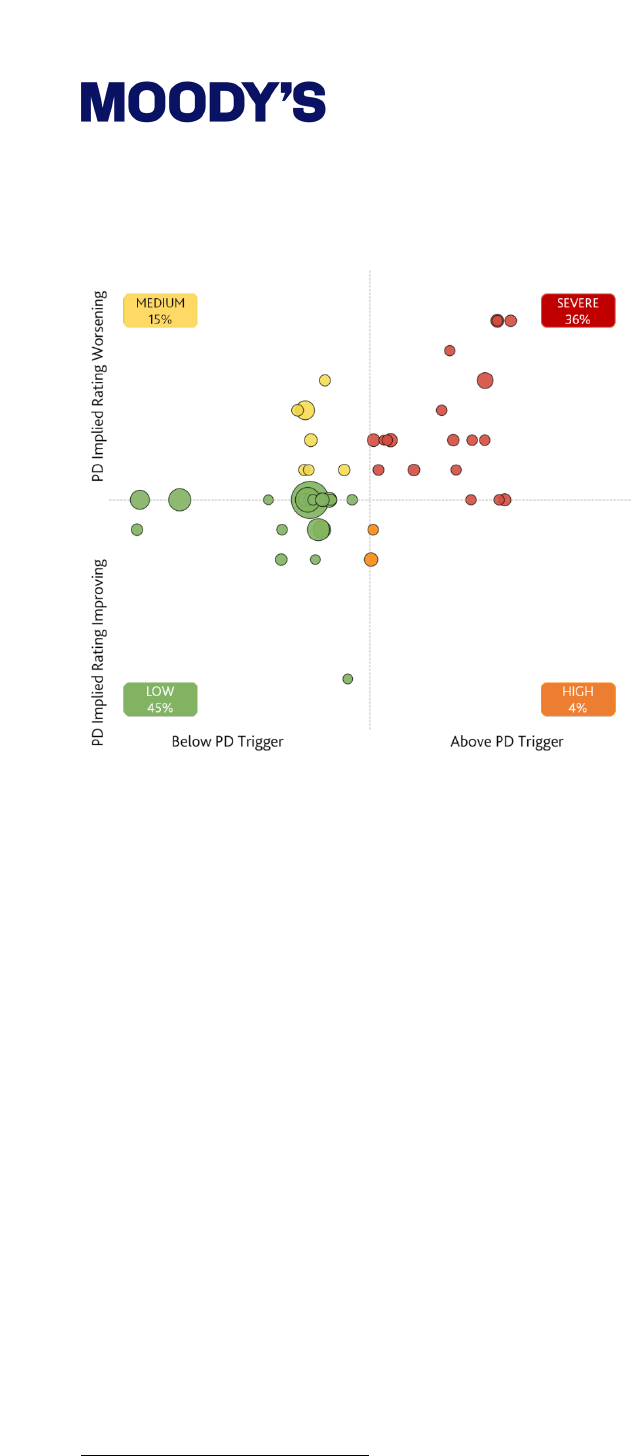
Credit Strategy
Froom Boom to Gloom: Navigating the Impending Downturn in the German Construction and Real Estate Sector
3
FIGURE 2 EDF-X Early warning signals for public German companies in the CRE sector, April 2024
Data source: Moody’s EDF-X platform.
While Moody’s EDF-X Early Warning System (EWS) provides actionable forward-looking signals, it's also crucial
to consider the impact of a shifting macroeconomic environment and the potential realization of different future
scenarios. To address this need, Moody ’s’ EWS methodology has been expanded to account for alternative
macroeconomic scenarios to perform what-if analysis that can ultimately be used for stress testing. In the
analysis that follows, we examine how the EDF-X early warning signals change for German construction
companies under Moody’s baseline economic scenario and a downside scenario.
The Moody's baseline scenario for Germany projects a marginal fall in output with an average negative year-on-
year growth rate of -0.37% until the last quarter of 2024, when growth is expected to turn positive.
4
This
scenario is based on the assumptions of no escalations in global geopolitical tensions and no changes in
monetary and fiscal policies until mid-2024, when the ECB is expected to start cutting rates. Under this
scenario, there is a significant improvement in the risk of public German companies in the CRE sector. Figure 3
shows the scenario-conditioned early warning signals distribution for these companies in December 2024.
Compared to April 2024, the percentage of companies classified as severe risk has decreased significantly from
36% to 20%, while the percentage of companies classified as low risk has increased from 45% to 64%.
In a downside scenario, the credit risk environment for construction and real estate companies deteriorates
significantly. In this Moody’s scenario, sentiment in Europe turns down sharply amidst increasing concerns
around global growth. Geopolitical tensions rise due to fears of escalations in the war in Ukraine and the Israel-
Hamas conflict, as well as an increase in tensions between China and the U.S. The resulting increase in risk
aversion leads to a sell-off in global financial markets, setting the scene for a moderate but prolonged recession
where the ECB hesitates to cut rates. In this scenario, by December 2024 most public firms in the CRE sector
are classified either as medium or severe risk, with firms under severe risk constituting 36% of the sector.
4
Moody’s alternative economic scenarios are available through www.economy.com to subscribers of the service.
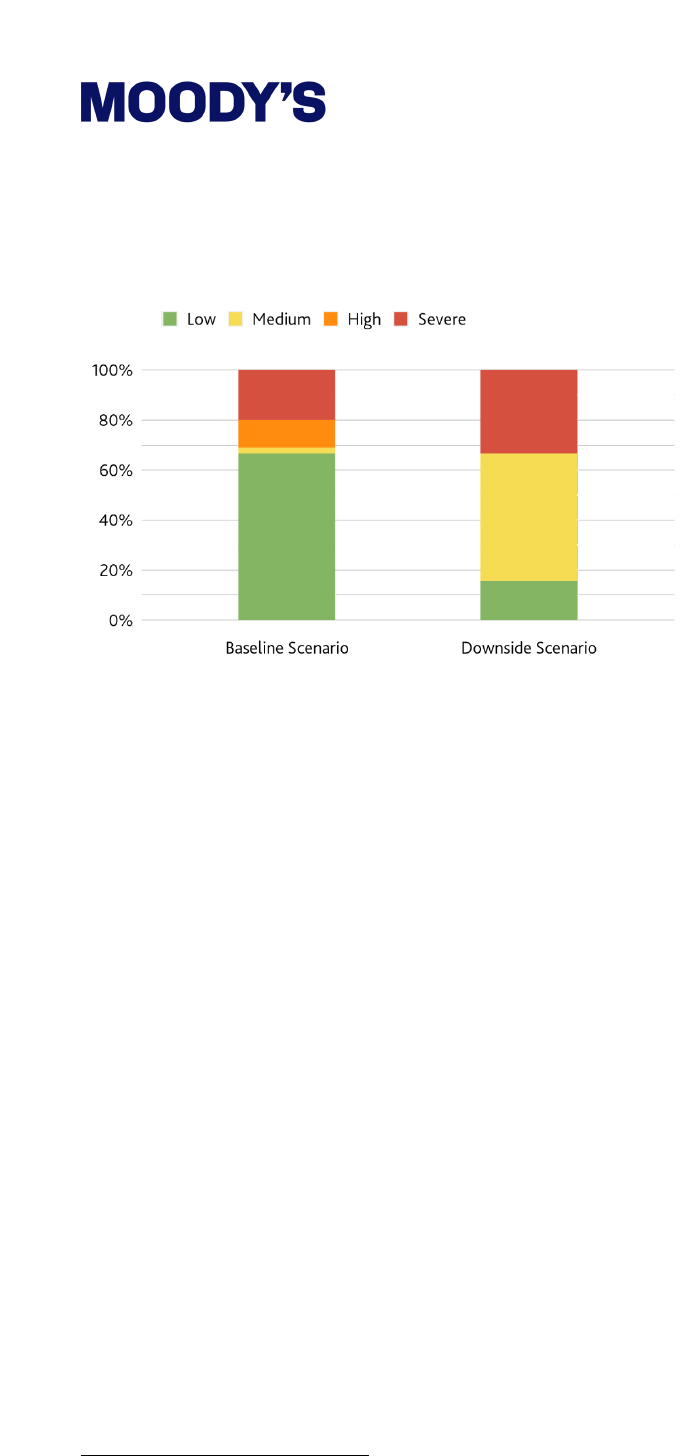
Credit Strategy
Froom Boom to Gloom: Navigating the Impending Downturn in the German Construction and Real Estate Sector
4
FIGURE 3 Scenario conditioned early warning signals distribution for public German companies in the CRE
sector, December 2024
Data source: Moody’s EDF-X platform.
A “VICTIM” OF THE SECTOR DOWNTURN: TRAUMHAUS AG
A clear example of how the sector downturn is affecting specific companies is Traumhaus AG, a public German
company with total assets around $160 mil (as of date Orbis, 2022). Founded in 1993, the company operates
within the full chain of real estate project development, from land acquisition to production, marketing, and
management of properties. The company recently filed for self-administration proceedings. The financial
downturn and situation surrounding the company have been extensively covered in the news media.
Moody’s EWS fla ed Traumhaus AG as being under severe risk in June 2023, when the company’s 1-year PD
jumped to 3.1% (equivalent to a B1 implied rating), surpassing the early warning trier level as shown in Figure
4. This severe risk warning was issued four months before the first of several steep declines in the company’s
stock price that would occur in 2023. The initial severe decline took place in October 2023, with the stock value
falling by 38% over a week. A subsequent decline occurred in a single day in November, with the stock plunging
from €2.20 to €0.28. This was also preceded by the EWS’s one-year PD escalating to 18.7%. The PD eventually
reached its peak at 50%, when the company entered administration.
5
5
50% is the maximum forward-looking probability of default for non-financial companies in Moody’s EDF-X platform.
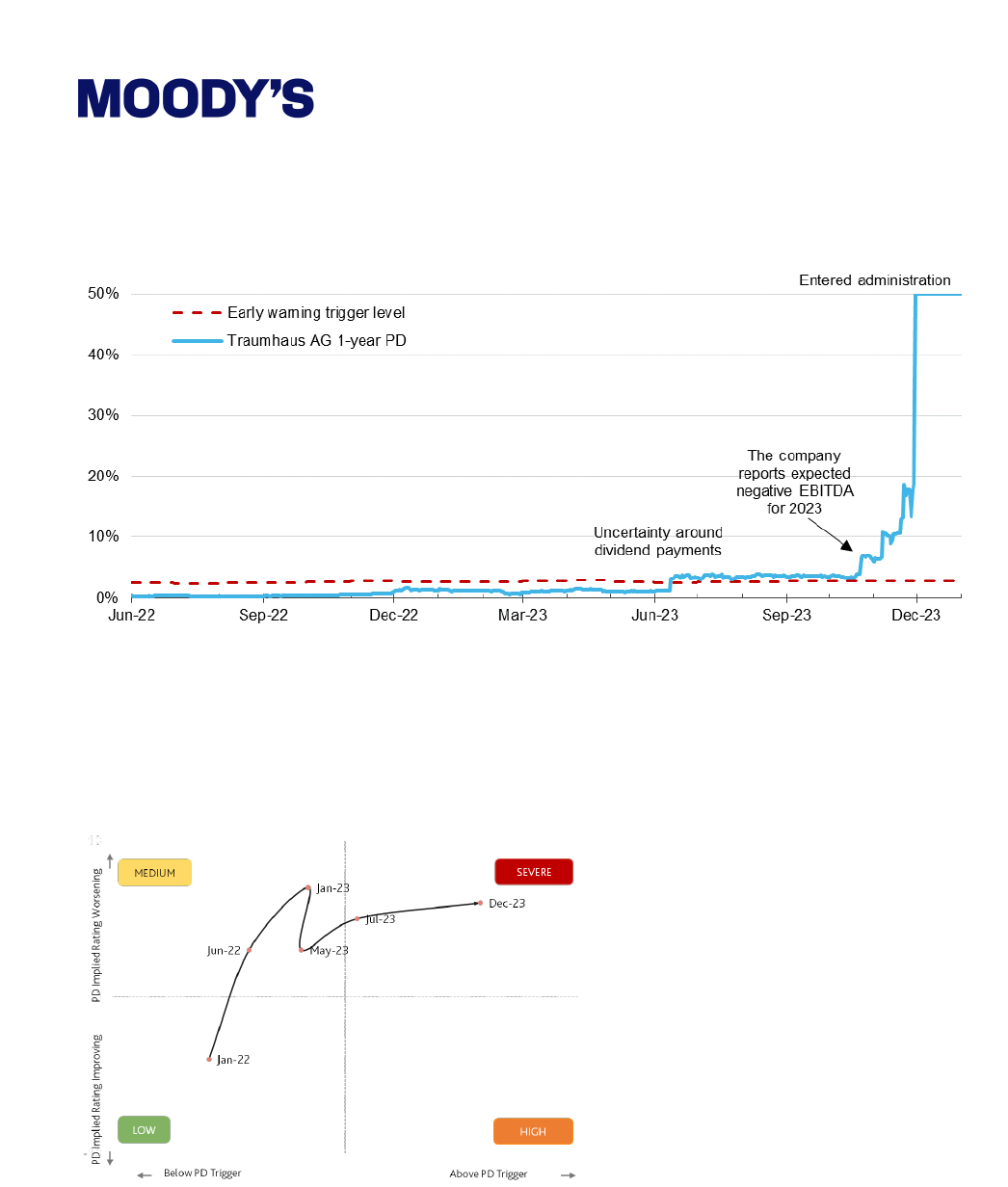
Credit Strategy
Froom Boom to Gloom: Navigating the Impending Downturn in the German Construction and Real Estate Sector
5
FIGURE 4 Traumhaus AG’s one-year PD vs. its sector early warning trier level
Data source: Moody’s EDF-X platform.
The protracted path of Traumhaus AG into administration was traced by EWS, as shown in Figure 5. The
company's low and stable early warning signal began to deteriorate in early 2022, and by June of the same year,
the company was marked as medium risk. The firm’s credit risk continued to deteriorate, gradually approaching
severe risk by June 2023, six months prior to administration.
FIGURE 5 Traumhaus AG’s early warning signal across time
Data source: Moody’s EDF-X platform.
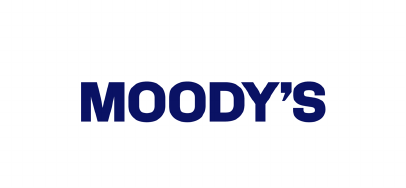
Credit Strategy
Froom Boom to Gloom: Navigating the Impending Downturn in the German Construction and Real Estate Sector
6
NAVIGATING DISTRESS WITH TIMELY RISK IDENTIFICATION
The credit risk deterioration within the German construction sector, as indicated by Moody's forward-looking
probability of default, suests that the industry is potentially on the verge of a significant downturn. This
downturn, characterized by an uptick in project cancellations and a growing number of companies deemed
severe in terms of credit risk, signals a potential crisis in the making. In a scenario where the German economy
underperforms beyond expectations, the sector could face a more prolonged and severe crisis, with an
increasing number of companies struling to maintain their operations. Moody’s scenario conditioned EWS
estimates that the percentage of at-risk companies could rise to 40% under an adverse economic scenario.
A striking example of this crisis is the case of Traumhaus AG. Moody’s Early Warning System (EWS) helped in
identifying and anticipating significant increases in credit risks within specific country and sector markets.
Identifying risky firms on time is crucial for credit risk management as it provides investors and lenders with
greater opportunities to implement mitigation plans and reduce financial impacts.
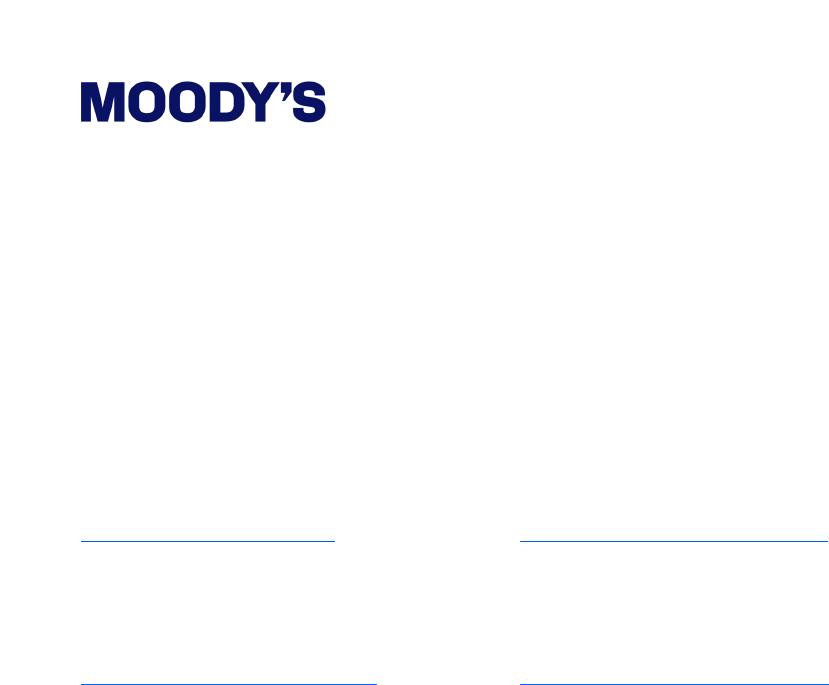
Credit Strategy
Froom Boom to Gloom: Navigating the Impending Downturn in the German Construction and Real Estate Sector
7
CONTACT US
EMEA
+44.20.1234.5678
clientservices.emea@moodys.com
ASIA (Excluding Japan)
+852.1234.5678
clientservices.asia@moodys.com
JAPAN
+81.1234.5678
clientservices.japan@moodys.com

Credit Strategy
Froom Boom to Gloom: Navigating the Impending Downturn in the German Construction and Real Estate Sector
8
© 2024 Moody’s Corporation, Moody’s Investors Service, Inc., Moody’s Analytics, Inc. and/or their licensors and affiliates (collectively, “MOODY’S”). All rights reserved.
CREDIT RATINGS ISSUED BY MOODY'S CREDIT RATINGS AFFILIATES ARE THEIR CURRENT OPINIONS OF THE RELATIVE FUTURE CREDIT RISK OF ENTITIES, CREDIT COMMITMENTS, OR
DEBT OR DEBT-LIKE SECURITIES, AND MATERIALS, PRODUCTS, SERVICES AND INFORMATION PUBLISHED OR OTHERWISE MADE AVAILABLE BY MOODY’S (COLLECTIVELY, “MATERIALS”)
MAY INCLUDE SUCH CURRENT OPINIONS. MOODY’S DEFINES CREDIT RISK AS THE RISK THAT AN ENTITY MAY NOT MEET ITS CONTRACTUAL FINANCIAL OBLIGATIONS AS THEY COME
DUE AND ANY ESTIMATED FINANCIAL LOSS IN THE EVENT OF DEFAULT OR IMPAIRMENT. SEE APPLICABLE MOODY’S RATING SYMBOLS AND DEFINITIONS PUBLICATION FOR
INFORMATION ON THE TYPES OF CONTRACTUAL FINANCIAL OBLIGATIONS ADDRESSED BY MOODY’S CREDIT RATINGS. CREDIT RATINGS DO NOT ADDRESS ANY OTHER RISK, INCLUDING
BUT NOT LIMITED TO: LIQUIDITY RISK, MARKET VALUE RISK, OR PRICE VOLATILITY. CREDIT RATINGS, NON-CREDIT ASSESSMENTS (“ASSESSMENTS”), AND OTHER OPINIONS INCLUDED
IN MOODY’S MATERIALS ARE NOT STATEMENTS OF CURRENT OR HISTORICAL FACT. MOODY’S MATERIALS MAY ALSO INCLUDE QUANTITATIVE MODEL-BASED ESTIMATES OF CREDIT
RISK AND RELATED OPINIONS OR COMMENTARY PUBLISHED BY MOODY’S ANALYTICS, INC. AND/OR ITS AFFILIATES. MOODY’S CREDIT RATINGS, ASSESSMENTS, OTHER OPINIONS AND
MATERIALS DO NOT CONSTITUTE OR PROVIDE INVESTMENT OR FINANCIAL ADVICE, AND MOODY’S CREDIT RATINGS, ASSESSMENTS, OTHER OPINIONS AND MATERIALS ARE NOT AND
DO NOT PROVIDE RECOMMENDATIONS TO PURCHASE, SELL, OR HOLD PARTICULAR SECURITIES. MOODY’S CREDIT RATINGS, ASSESSMENTS, OTHER OPINIONS AND MATERIALS DO NOT
COMMENT ON THE SUITABILITY OF AN INVESTMENT FOR ANY PARTICULAR INVESTOR. MOODY’S ISSUES ITS CREDIT RATINGS, ASSESSMENTS AND OTHER OPINIONS AND PUBLISHES OR
OTHERWISE MAKES AVAILABLE ITS MATERIALS WITH THE EXPECTATION AND UNDERSTANDING THAT EACH INVESTOR WILL, WITH DUE CARE, MAKE ITS OWN STUDY AND EVALUATION
OF EACH SECURITY THAT IS UNDER CONSIDERATION FOR PURCHASE, HOLDING, OR SALE.
MOODY’S CREDIT RATINGS, ASSESSMENTS, OTHER OPINIONS, AND MATERIALS ARE NOT INTENDED FOR USE BY RETAIL INVESTORS AND IT WOULD BE RECKLESS AND INAPPROPRIATE
FOR RETAIL INVESTORS TO USE MOODY’S CREDIT RATINGS, ASSESSMENTS, OTHER OPINIONS OR MATERIALS WHEN MAKING AN INVESTMENT DECISION. IF IN DOUBT YOU SHOULD
CONTACT YOUR FINANCIAL OR OTHER PROFESSIONAL ADVISER.
ALL INFORMATION CONTAINED HEREIN IS PROTECTED BY LAW, INCLUDING BUT NOT LIMITED TO, COPYRIGHT LAW, AND NONE OF SUCH INFORMATION MAY BE COPIED OR OTHERWISE
REPRODUCED, REPACKAGED, FURTHER TRANSMITTED, TRANSFERRED, DISSEMINATED, REDISTRIBUTED OR RESOLD, OR STORED FOR SUBSEQUENT USE FOR ANY SUCH PURPOSE, IN
WHOLE OR IN PART, IN ANY FORM OR MANNER OR BY ANY MEANS WHATSOEVER, BY ANY PERSON WITHOUT MOODY’S PRIOR WRITTEN CONSENT. FOR CLARITY, NO INFORMATION
CONTAINED HEREIN MAY BE USED TO DEVELOP, IMPROVE, TRAIN OR RETRAIN ANY SOFTWARE PROGRAM OR DATABASE, INCLUDING, BUT NOT LIMITED TO, FOR ANY ARTIFICIAL
INTELLIGENCE, MACHINE LEARNING OR NATURAL LANGUAGE PROCESSING SOFTWARE, ALGORITHM, METHODOLOGY AND/OR MODEL.
MOODY’S CREDIT RATINGS, ASSESSMENTS, OTHER OPINIONS AND MATERIALS ARE NOT INTENDED FOR USE BY ANY PERSON AS A BENCHMARK AS THAT TERM IS DEFINED FOR
REGULATORY PURPOSES AND MUST NOT BE USED IN ANY WAY THAT COULD RESULT IN THEM BEING CONSIDERED A BENCHMARK.
All information contained herein is obtained by MOODY’S from sources believed by it to be accurate and reliable. Because of the possibility of human or mechanical error as well as other factors,
however, all information contained herein is provided “AS IS” without warranty of any kind. MOODY'S adopts all necessary measures so that the information it uses in assigning a credit rating is of
sufficient quality and from sources MOODY'S considers to be reliable including, when appropriate, independent third-party sources. However, MOODY’S is not an auditor and cannot in every
instance independently verify or validate information received in the credit rating process or in preparing its Materials.
To the extent permitted by law, MOODY’S and its directors, officers, employees, agents, representatives, licensors and suppliers disclaim liability to any person or entity for any indirect, special,
consequential, or incidental losses or damages whatsoever arising from or in connection with the information contained herein or the use of or inability to use any such information, even if
MOODY’S or any of its directors, officers, employees, agents, representatives, licensors or suppliers is advised in advance of the possibility of such losses or damages, including but not limited to:
(a) any loss of present or prospective profits or (b) any loss or damage arising where the relevant financial instrument is not the subject of a particular credit rating assigned by MOODY’S.
To the extent permitted by law, MOODY’S and its directors, officers, employees, agents, representatives, licensors and suppliers disclaim liability for any direct or compensatory losses or damages
caused to any person or entity, including but not limited to by any negligence (but excluding fraud, willful misconduct or any other type of liability that, for the avoidance of doubt, by law cannot be
excluded) on the part of, or any contingency within or beyond the control of, MOODY’S or any of its directors, officers, employees, agents, representatives, licensors or suppliers, arising from or in
connection with the information contained herein or the use of or inability to use any such information.
NO WARRANTY, EXPRESS OR IMPLIED, AS TO THE ACCURACY, TIMELINESS, COMPLETENESS, MERCHANTABILITY OR FITNESS FOR ANY PARTICULAR PURPOSE OF ANY CREDIT RATING,
ASSESSMENT, OTHER OPINION OR INFORMATION IS GIVEN OR MADE BY MOODY’S IN ANY FORM OR MANNER WHATSOEVER.
Moody’s Investors Service, Inc., a wholly-owned credit rating agency subsidiary of Moody’s Corporation (“MCO”), hereby discloses that most issuers of debt securities (including corporate and
municipal bonds, debentures, notes and commercial paper) and preferred stock rated by Moody’s Investors Service, Inc. have, prior to assignment of any credit rating, agreed to pay to Moody’s
Investors Service, Inc. for credit ratings opinions and services rendered by it. MCO and Moody’s Investors Service also maintain policies and procedures to address the independence of Moody’s
Investors Service credit ratings and credit rating processes. Information regarding certain affiliations that may exist between directors of MCO and rated entities, and between entities who hold
credit ratings from Moody’s Investors Service, Inc. and have also publicly reported to the SEC an ownership interest in MCO of more than 5%, is posted annually at www.moodys.com under the
heading “Investor Relations — Corporate Governance — Charter Documents - Director and Shareholder Affiliation Policy.”
Moody's SF Japan K.K., Moody's Local AR Agente de Calificación de Riesgo S.A., Moody’s Local BR Agência de Classificação de Risco LTDA, Moody’s Local MX S.A. de C.V, I.C.V., Moody's Local
PE Clasificadora de Riesgo S.A., and Moody's Local PA Calificadora de Riesgo S.A. (collectively, the “Moody’s Non-NRSRO CRAs”) are all indirectly wholly-owned credit rating agency subsidiaries
of MCO. None of the Moody’s Non-NRSRO CRAs is a Nationally Recognized Statistical Rating Organization.
Additional terms for Australia only: Any publication into Australia of this document is pursuant to the Australian Financial Services License of MOODY’S affiliate, Moody’s Investors Service Pty
Limited ABN 61 003 399 657AFSL 336969 and/or Moody’s Analytics Australia Pty Ltd ABN 94 105 136 972 AFSL 383569 (as applicable). This document is intended to be provided only to
“wholesale clients” within the meaning of section 761G of the Corporations Act 2001. By continuing to access this document from within Australia, you represent to MOODY’S that you are, or are
accessing the document as a representative of, a “wholesale client” and that neither you nor the entity you represent will directly or indirectly disseminate this document or its contents to “retail
clients” within the meaning of section 761G of the Corporations Act 2001. MOODY’S credit rating is an opinion as to the creditworthiness of a debt obligation of the issuer, not on the equity
securities of the issuer or any form of security that is available to retail investors.
Additional terms for India only: Moody’s credit ratings, Assessments, other opinions and Materials are not intended to be and shall not be relied upon or used by any users located in India in
relation to securities listed or proposed to be listed on Indian stock exchanges.
Additional terms with respect to Second Party Opinions (as defined in Moody’s Investors Service Rating Symbols and Definitions): Please note that a Second Party Opinion (“SPO”) is not a “credit
rating”. The issuance of SPOs is not a regulated activity in many jurisdictions, including Singapore. JAPAN: In Japan, development and provision of SPOs fall under the category of “Ancillary
Businesses”, not “Credit Rating Business”, and are not subject to the regulations applicable to “Credit Rating Business” under the Financial Instruments and Exchange Act of Japan and its
relevant regulation. PRC: Any SPO: (1) does not constitute a PRC Green Bond Assessment as defined under any relevant PRC laws or regulations; (2) cannot be included in any registration
statement, offering circular, prospectus or any other documents submitted to the PRC regulatory authorities or otherwise used to satisfy any PRC regulatory disclosure requirement; and (3) cannot
be used within the PRC for any regulatory purpose or for any other purpose which is not permitted under relevant PRC laws or regulations. For the purposes of this disclaimer, “PRC” refers to the
mainland of the People’s Republic of China, excluding Hong Kong, Macau and Taiwan.
